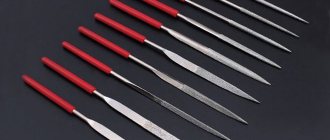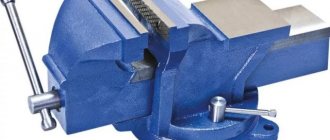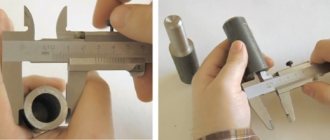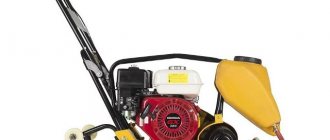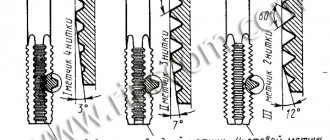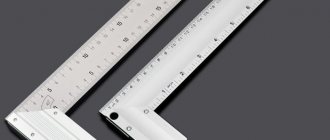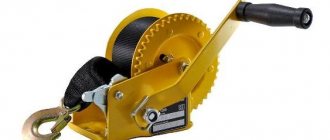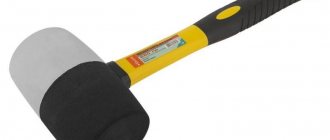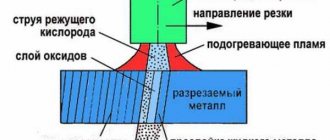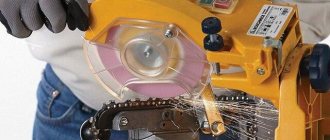- Regular circles of different diameters and different grain sizes.
With Velcro glued to the back.
Abrasive sanding paper is available in the form of sheets, rolls, tapes, and wheels. There are other forms - for attachments to instruments
There are also sanding sponges. This is an abrasive that is applied to polyurethane foam. This type of abrasive is used to smooth surfaces with grooves, threads, and recesses. Abrasive particles can be applied to one, two or four sides of the sponge. May be the same size or different. But usually, this is a fine grain, just of varying degrees of “fineness”. Sponges are more convenient because they can take any shape; in addition, they can be washed to remove dust and dried. The number of washes is not limited. They do not suffer from washing; they can be used while the grain is still intact. And this depends on the quality.
Types of sandpaper grit
As already mentioned, sandpaper grit is the size of the abrasive fragments. They are measured in micrometers. The smallest grain found in sandpaper is only 3-5 microns, the largest is 1000 microns (this is 1 mm). Based on grain size, fine-grained and coarse-grained abrasives are distinguished.
Usually we are only interested in the grain size or grit of the sandpaper
Russian standards
In order to be able to understand what specific material is in front of you, the dimensions of the abrasive grain are indicated in the marking. But things are not so simple with her. During the USSR, GOST (3647-80) was introduced, the designation according to which still exists, although in 2005 a new standard was introduced (GOST R 52381-2005), which was developed on the basis of pan-European standards. The difference between the old and new GOST is significant.
This marking method is used in some countries of the post-Soviet space.
How to choose the right sharpening machine
August 23, 2017
Every house has knives and scissors; summer residents regularly use an ax and shovel; during repairs, the builder will need chisels and drills. Most garden, construction and household tools require regular sharpening. Devices for manual sharpening are not suitable for all types of tools; in addition, they take a lot of time, and the result is not always expected. In such cases, a sharpening machine is needed, or household emery, as builders call it.
Best Belt Sharpening Machine
The JET JDBS-5-M plate-and-belt machine is intended for domestic use. It has low weight and dimensions, as well as two working surfaces: a grinding disc and a belt. Among the advantages, we should highlight a table with the ability to adjust the angle of inclination. The work process is simplified by a solid bearing surface and an adjustable miter gauge.
The machine can be easily mounted on any flat surface. The quality of the product is at a high level, which eliminates vibration. There is a mechanism for connecting dust removal. The model is excellent for sharpening and polishing small metal products, such as knives.
Characteristics
- engine power – 0.25 kW;
- maximum speed – 2850 rpm;
- disk parameters: diameter – 125 mm;
- desktop tilt limits: 0°-45°;
- weight – 7 kg.
Pros:
- low weight and dimensions;
- adjustable desk.
Minuses:
- The miter gauge is slightly loose.
Characteristics of the sharpening machine
Choosing a sharpening machine, like any tool, begins with studying the technical characteristics. They affect the performance of the device, durability and quality of sharpening. Key features of the sharpening machine include:
- Grinding machine power
. The indicator varies from 120 to 400 W, and is directly related to the material of the tool that is planned to be sharpened using sandpaper. The larger and denser the material, the more force must be applied to sharpen it. A machine with reduced power will overheat and fail faster. - Grinding wheel diameter
. The parameter is directly related to the power of the unit. Using a larger wheel diameter requires increased machine power. There are 3 sizes of grinding wheel: large (20 cm), medium (15-17.5 cm) and small (12.5 cm). However, for industrial plants where high efficiency is important, circles of increased diameter are produced, up to 40 cm. - Emery planting
. This parameter indicates the diameter of the internal hole of the grinding wheel, with the help of which the disk clings to the unit. The most common fit is 32 mm; finding an abrasive wheel will not be a problem. There are also 20 and 16 mm fits, but they are used less frequently and the choice of discs is smaller. - Machine manufacturer
. Sharpening machines are included in the line of power tools from many manufacturers. Both foreign and domestic companies have high-quality units.
Best Saw Sharpener
The inexpensive but effective JMY8-70 machine is designed for sharpening circular saws made of hard alloys. Machining is performed on both sides of the tool. There is also the possibility of oblique sharpening. The tool holder tilts over a range of 85°. The precision of processing is at a high level due to the cast base of increased strength with rubber inserts that reduce noise and vibration. The sharpening angle is maintained thanks to the use of bearings in the guide mechanisms and the inclined tool holder. All adjustments are made manually.
The machine package includes detailed instructions for setting up and operating, as well as adapters for the mounting size of the grinding disk and additional fasteners.
Characteristics
- engine power – 250 W;
- speed – 2850 rpm;
- saw diameter – from 80 mm to 700 mm;
- grinding disc parameters: diameter – 125 mm;
- engine tilt in both directions: 20°;
- desktop tilt – from 30° to 45°;
- weight – 33 kg.
pros
- wide saw holder tilt range;
- high processing accuracy;
- low noise and vibration levels;
- easy adjustment.
Minuses
- quite high cost, which does not affect the popularity of this model.
Selecting a grinding wheel
The choice of abrasive discs is directly related to the purchase of a grinding machine, since the unit is an engine, and sharpening occurs thanks to grinding wheels. Depending on the composition, I will highlight the most popular types of grinding wheels.
- Grinding wheel made of electrocorundum
. It is marked 25A. Made from soft materials, does not overheat during operation, ideal for sharpening knives, scissors, and garden tools. - Silicon carbide grinding wheel
. It is marked 64C. This disc is characterized by increased abrasion resistance; the disc heats up during operation; it is intended for sharpening hard alloys. Knives and garden tools on such a disc will be damaged. - Volcanic based grinding wheel
. Contains rubber and abrasive material. Used for grinding, rust removal, deburring. Sharpening a tool on such a wheel will not work.
The composition of the wheel affects the softness of the sharpening disc. Electrocorundum is a malleable material; the softness of such wheels is designated by the abbreviation SM (medium-soft). Silicon carbide wheels are medium-hard and designated ST. Another important characteristic is the grain size of the grinding wheel. Fine grain is used for precise sharpening (index 8, 12 or 16), coarse grain is used for rough work (index 25 and 40). It is also important to be able to read the information on the grinding wheel in order to use the wheel correctly. For example, 150 8 32 12 CM means that this wheel is medium-soft, 150 mm in diameter, 8 mm thick, 32 mm fit, 12 grit - this wheel is ideal for precision sharpening of kitchen knives.
Types of bases
The performance characteristics of sandpaper depend on the type of material on which the abrasive was applied during manufacturing - wear resistance and ease of handling. What types of materials can be used for the base:
- Paper. There is ordinary and moisture resistant with a high strength index. Its advantage is that paper has a lower cost, retains its size when performing work, and allows the application of the smallest abrasive material to its surface. Its disadvantage is the low degree of wear resistance.
- Textile. The base is cotton or polyester with the addition of special resins that improve the strength characteristics of the material and its moisture resistance. The main advantage of such a product is its elasticity and high strength properties.
Fabrics come in the following classes:
- J – used for processing edges and corners;
- X – used in conditions with increased pollution;
- W, Y – intended for machine processing.
The disadvantages of the fabric base are characterized by the high cost of the finished product and the ability to lengthen during work.
There is another type of base - combined (two-layer), where paper is glued to fabric. This sandpaper has high elasticity, good wear resistance, and resistance to wet working conditions. Sometimes you can find products with a sponge base, which is not afraid of water, allows dust to pass through and does not wear out for a long time.
Selecting a sharpening machine
Sharpening machines according to productivity are divided into household, semi-professional and professional. A household sharpening machine is suitable for daily short-term work with pliable material. Knives and scissors for the home, garden tools - sufficient household appliances are sufficient for these needs. A professional sharpening machine is capable of performing work every day for many hours. It can handle hard metals, be it a shovel or a hammer drill. Professional units have increased power, sometimes the grinding wheel is replaced with a belt, and a set of additional functions make working with the tool easier. Semi-professional models are the middle category between home and industrial units.
This article will help you choose the right electric sharpener based on the purpose and frequency of use in the garden and at home.
The best sharpening machine for drills
The DRILL DOCTOR 750X model is designed for sharpening drills made of hard alloys (titanium nitride, cobalt), carbon and high-speed steel HSS in domestic conditions. Supports tool diameter 2.4-19mm. Rigid fixation of drills is ensured by a clamping chuck with a V-groove. The working element of the machine is a 24 mm diamond drum with a width of 19 mm and a grain size of 180 grit. To quickly sharpen drills, the drum can be easily replaced with a 100 grit version.
The stability of the machine body is ensured by silicone legs, and the powerful electric motor maintains speed under load. The model allows you to sharpen the back surface of drills with angles of 115°-140°. Thanks to a special adjustment screw, you can sharpen a slightly dull tool.
Characteristics
- engine power – 80 W;
- rotation speed – 15 thousand rpm;
- diameter of sharpened drills – from 2.4 mm to 19 mm;
- weight – 1 kg;
- sharpening angle range: 115°-140°.
pros
- improved cartridge design;
- adjusting the amount of sanded material;
- patented sharpening system;
- adjustable leveling system.
Minuses
- it is impossible to sharpen drills with a diameter of less than 2.5 mm;
- high cost of consumables.
Why do you need a sharpening machine?
In home life there is no particular need for a sharpening machine. It’s easier and faster to sharpen knives with knife sharpeners, and the sharpening machine actually won’t have any other work to do. It's another matter when there is a need to sharpen a cutting tool. Axes, chisels, chisels, drills, cutters, planer knives and other tools are sometimes simply impossible to sharpen by hand. Then a sharpening machine will come to the rescue.
The structure of the sharpening machine is simple to the point of primitiveness: one or, most often, two abrasive discs are located directly on the motor shaft. As a rule, one disk has a coarse grain and is intended for coarse sharpening, the second disk has a fine grain - for subsequent finishing or grinding. But different tools require different processing conditions, so sharpening machines are still divided into certain classes.
The most common type of sharpener is high-speed (from 2000 to 10,000 rpm) machines with two disks located on the shaft of one electric motor on different sides. This sharpener is usually used for sharpening metal tools with a thick cutting edge - drills, chisels, axes. When sharpening knives and chisels on such a sharpener, you should be careful - thin metal can quickly overheat. If scale appears on the cutting edge, the hardened steel “sinks” - it becomes soft, cuts poorly, and wears out quickly. Therefore, overheating should not be allowed. This leads to some inconvenience when sharpening knives on such a machine. Some models of sharpeners equipped with a speed controller do not have this drawback, but more often angle sharpening machines are used to sharpen thin blades.
In angle grinders, only one abrasive disc is located directly on the motor shaft. The second – grinding – disc is connected to the engine through a gearbox, which reduces the rotation speed to 120-150 rpm. In addition, this disc is usually located in a bath into which water can be poured, ensuring constant water cooling of the surface being sharpened. Such machines are more universal, but, for example, they are not suitable for sharpening drills: the only high-speed disk has a coarse grain, and sharpening hard tool steel on a slow grinding wheel will not be easy.
Another type of sharpening machines is sharpening and grinding. Instead of a second abrasive wheel, they have a sanding belt installed. This solution significantly expands the functionality of the machine, allowing not only to sharpen and grind cutting tools, but also to use it, for example, for grinding small parts that are inconvenient to handle with grinders.
Some manufacturers have gone even further by providing the ability to connect a flexible shaft with an engraving machine to the engine. Such a tool is highly powerful - engraving machines of comparable power will cost much more.
Some sharpening machines are equipped with devices for sharpening drills, saw chains, circular saws, and other tools, and for sharpeners with a narrow specialization, special sharpening machines are offered: for drills, for chains, etc.
Excellent chain sharpening machines
Sharpeners for working with chainsaw chains will be useful for those who constantly operate gasoline saws or their electrically powered and battery-powered counterparts. A sharp chain will ensure high productivity and save fuel or protect the electric motor from overheating.
CHAMPION C2001
Professional sharpening machine with a power of 230 W, producing 3000 rpm. Equipped with a 14.5x2.2 cm stone mounted on a direct shaft from an electric motor. The drive is located on a metal bracket with a drop top. On the horizontal metal frame there is a vice slot for clamping a chain. The rotating sander is covered with a transparent casing to ensure proper visibility and safety. Users in reviews pay attention to the convenient scale, which makes it easy to adjust the degree of influence of the stone on the chain teeth.
The equipment was included in the rating due to its good equipment and high performance. It is a must-have for logging crews that need to sharpen chains in large quantities.
Positive traits
- good powder coating;
- powerful motor for this category of machines;
- convenient handle with a limiter for lowering the frame;
- efficient air cooling.
Minuses
- a kind of vertical base is required for installation, because the bottom screw protrudes far outward;
- high price;
- some fittings have plastic threads;
- takes up quite a bit of space.
Vihr SZC-200
A domestic product with a power of 200 W and a rotation speed of 6000 rpm. Equipped with a circle with a diameter of 100 mm and a thickness of 3.2 mm. There are three adjustment screws for clamping the chain and adjusting the inclined angle of the motor block. The back of the compartment has repeating holes for heat dissipation. Although there are some gaps in the design, according to the owners’ impressions, they can be easily removed and the equipment can be adjusted to work properly.
The machine is included in the rating as one of the cheapest in the category, in comparison with similar ones. We recommend this machine for those who need to prepare a significant amount of firewood for heating on their own, and thanks to this, the chain on a gasoline saw constantly needs to be straightened. Due to the lower price, the product will quickly pay for itself.
Positive traits
- can be fixed on a small crossbar;
- iron frame;
- the scale for setting the angle is engraved, not drawn;
- Suitable for chains with a wide variety of pitches.
Minuses
- the handle slides;
- plastic case;
- slight protection from flying abrasive material;
- heats up faster.
CHAMPION C2000
A chain saw sharpener with a simple design and a weight of only 2 kg. Rotation is provided by an 85 W electric motor, which spins the sandpaper up to a speed of 4500 rpm. The stone thickness of 4.5 mm allows you to sharpen even professional chains with large pitches. Based on impressions, it was noted that the machine operates very quietly, and its clamp reliably holds the inserted chain. But users lack backlighting, so they will have to worry about this separately. The model also does not have a full-fledged handle, but only a small protrusion - the pressure is practically applied to the head of the motor.
Experts decided to add this sharpening machine to the rating as another inexpensive option for people who often use a gasoline saw in their summer cottage. The machine will make it possible to conveniently sharpen a chain, and not waste half a day of wood using a file. It is quite good to use it to change the sharpening angle from 30 degrees to 10, which was noted by many owners.
Positive traits
- table rotation for work from 0 to 35 degrees;
- economical energy consumption 85 W per hour;
- grinding wheel 10.5 cm;
- engraved scale for precise installation.
Minuses
- plastic frame;
- flimsy casing with a protective function;
- the stop for the stop bolt breaks quickly;
- small screen with security function.
Characteristics of sharpening machines.
Power . The more power a sharpening machine has, the greater the load that can be placed on the grinding wheel without the risk of overheating the engine. The larger the tools and parts that are supposed to be sharpened, the more power is required. To sharpen thin and small tools (knives for engravings or wood carvings, thin drills and chisels), high power is not needed. For everyday use, a power of 150-250W will be sufficient, but for sharpening axes, shovels and scythes, it is better to choose a machine with more power.
Maximum speed. The optimal rotation speed of grinding machines was selected a long time ago: it is 2700-3000 rpm. A lower speed leads to a decrease in productivity; at a higher speed, the material of the sharpened products will begin to overheat. High speeds are only necessary when sharpening carbide tools with fine abrasive (diamond) discs. The grain of such a disk is so fine that at normal speed its performance will be too low. Therefore, cutting elements made of hard alloys (heads of hammer drills, drill heads, brazing on circular saws) are sharpened with diamond blades at frequencies up to 15,000 rpm.
Wheel diameter . Small circles with a small bore diameter are usually used in low-power household models. You cannot place a large and heavy abrasive wheel on a small-diameter shaft - the slightest imbalance in it will quickly lead to bending of the shaft and beating of the disc, which will have a bad effect on the quality of sharpening. Powerful models usually have a larger diameter shaft and, accordingly, a larger seat diameter. But even on a low-power model, a large bore diameter will not be a disadvantage - it will ensure the absence of runout, which is very important for high-quality sharpening of thin tools.
Circle diameter . The larger the tool you plan to sharpen, the larger the diameter of the wheel the machine should have: a small wheel when sharpening scythes and axes will quickly wear off and require replacement. In addition, the large abrasive wheel has high inertia - this ensures smoother grinding and uniform load on the engine, which has a beneficial effect on its service life. At the same time, the diameter of the circle is directly related to the power of the machine and, accordingly, to its price. Therefore, for sharpening small tools, using large-diameter wheels is impractical.
Circle thickness . Just like the diameter, it depends on the size of the tool being processed. When sharpening chisels and other cutting tools of small width, it is advisable to choose a wheel with a thickness slightly greater than the width of the tool being sharpened. Another argument in favor of thicker wheels is that a thin wheel wears down faster or loses its shape, causing it to become unbalanced. In both cases, the circle will need to be replaced. But the greater thickness of the circle increases its mass, and, accordingly, requires more engine power.
In addition to these general characteristics, you should also pay attention to the equipment of the machine and the presence of additional options in it:
A protective casing and a transparent protective screen are the minimum necessary to ensure the safety of any sharpening machine. Abrasive wheels are made of brittle material, and a damaged grinding wheel can instantly break into several pieces. Failure to use the protective cover and shield in this situation can result in serious injury.
Illumination in the form of a lamp on a flexible leg or individual lighting for each disc is a very useful option when you need to carefully monitor the contact area between the tool being sharpened and the disc.
A working platform with a variable inclination angle can be very useful when sharpening tools with a clearly defined sharpening angle: drills, chisels, chisels.
The ability to attach to a supporting surface is absolutely necessary when sharpening large tools: even the most powerful sharpening machines have a small mass and it can easily be accidentally moved out of place and even dropped. During operation, this can lead to damage to both the tool being sharpened and the machine itself. Therefore, if there is such a possibility, it is better to screw the machine “tightly” to the workbench. Even when sharpening small tools, this will increase the convenience of work.
Best knife sharpener
ENCOR Corvette-470 machine is designed for sharpening cutting knives of planing equipment and surface planers made of high-speed and carbide steel. High precision of work is due to a convenient holder and reliable design. The use of an asynchronous motor made it possible to achieve low noise levels and small dimensions. The sharpening machine of this model is suitable for professional use and compares favorably with similar options due to its small dimensions.
The machine is equipped with a coolant supply system, which preserves the properties of the material being processed, preventing overheating of the cutting part of the tool. The distance to the sharpening disc is adjusted using a convenient pulley, and stability is ensured by mounting loops in the base.
Characteristics
- engine power – 550 W;
- motor type – asynchronous;
- transmission type – direct;
- grinding wheel parameters: diameter – 100 mm, seat diameter – 20 mm;
- weight – 70 kg.
pros
- ease of use;
- reliable fastening of the sharpened tool;
- high accuracy of work;
- wide range of sharpening angle adjustments;
- Possibility of using a diamond or abrasive grinding disc.
Minuses
- It is difficult to find a sharpening disc for sale.

